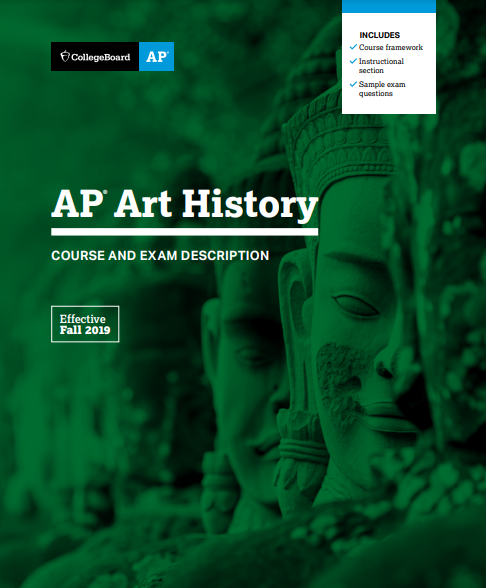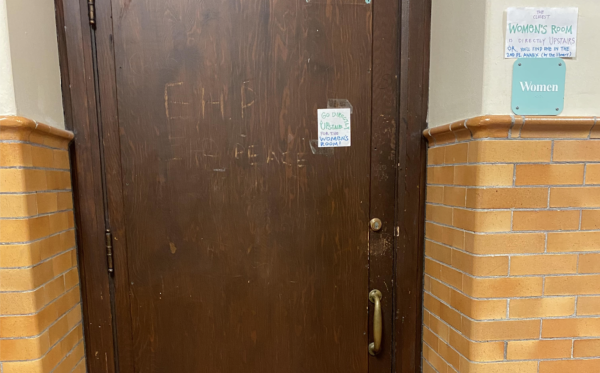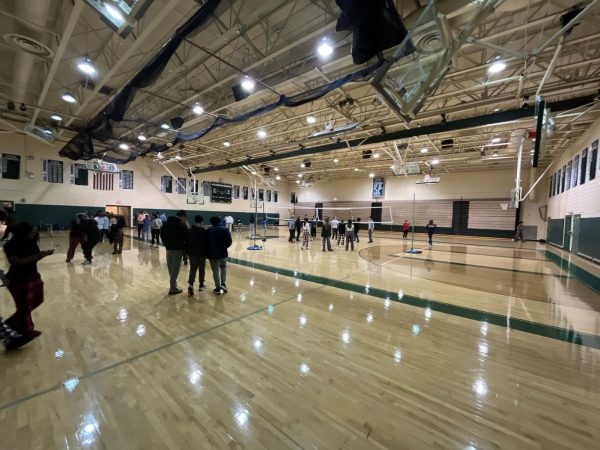AP Art History at Allderdice: The Lasting Value of Education in the Arts

The AP Art History course and exam description.
Classes at Taylor Allderdice High School typically hold approximately thirty students. AP Art History, however, is a small class, with only fifteen students. The class is tucked away in a large, sunlit classroom. The AP Art History course covers 250 art pieces, from the paleolithic era to present day. Each piece belongs to one of the ten content periods: Global Prehistory, Ancient Mediterranean, Early Europe and Colonial Americas, Later Europe and Americas, Indigenous Americas, Africa, West and Central Asia, South, East, and Southeast Asia, The Pacific, and Global Contemporary.
Allderdice AP Art History Teacher Wendy Kramer remembers when the course offered more broad exposure to art history in general. Collegeboard, the organization that creates and oversees Advanced Placement classes, introduced a redesigned course for the 2015-2016 academic school year. Collegeboard says of the class, “The study of art invites students to discover the diversity in and connections among forms of artistic expression throughout history and from around the globe. Students learn about how people have responded to and communicated their experiences through art making by exploring art in its historical and cultural contexts. The AP Art History course welcomes students into a global art world as active participants, engaging with its forms and content as they research, discuss, read, and write about art, artists, art making and responses to and interpretations of art.”
The class is unique not only in its content but also in its structure: in addition to an occasional topic lecture on the upcoming content unit, each day consists of three students presenting the “snapshot” of their assigned piece to the class. Of the chosen learning model, Kramer says, “The one doing the talking is the one doing the thinking! I want students to know the artworks and understand the connections between them… This will be great preparation for college, but more importantly, this model helps everyone learn better than me presenting information. Why use training wheels if you don’t need them?”
Kramer argues that the knowledge and skills acquired from the study of the arts are universally applicable: “Not only do students learn about how we (humans) have developed art around the world, but it also demands that students analyze and synthesize learning from every single class period and incorporate it into their understanding of art history. That kind of analysis is crucial to any high-level subject.”
Abigail Segel, a freshman at McGill University, and Luke Chinman, a freshman at Williams College, took AP Art History during their time at Allderdice. They agree with Kramer’s assessment.
Although Segel has not taken an art history course in college, some of the required 250 pieces from the course have come up in her studies.
Segel says, “AP Art History allows students a more thorough understanding of history, cultures, and people. In an age where STEM is celebrated and the humanities are pushed aside as nonessential, schools have a responsibility to provide students with a well-rounded, culturally competent education—as well as the passion to pursue it for themselves.”
Chinman adds, “There’s that classic joke that school departments love to cut art departments, and I understand why the administration feels that they should value more “academic” courses, but I think that really undercounts how much historical and cultural value there is in the arts.”
Amid the national push for STEM (science, technology, engineering, math) education in schools, evidence suggests the “remarkable” benefits of arts education “on students’ academic, social, and emotional outcomes.”
The study found that the most promising outcomes associated with arts education cannot be encapsulated in commonly used metrics to measure academic success. It argues, “…engagement in arts education can improve school climate, empower students with a sense of purpose and ownership, and enhance mutual respect for their teachers and peers.”
AP Art History is unique, however, in that it combines the conventional wisdom of a history class with the study of the art of our past. Segel says, “Though the class is ostensibly about the 250 pieces and how artistic traditions have changed through time, I viewed each piece as a glimpse of history. In conventional history classes, written texts are the main bases for scholarship; in Art History, art and architecture are used instead.”
Gabriella Naveh is a senior at Taylor Allderdice High School in Pittsburgh, Pennsylvania. She is the Editor-in-Chief of The Foreword, the Allderdice student...






